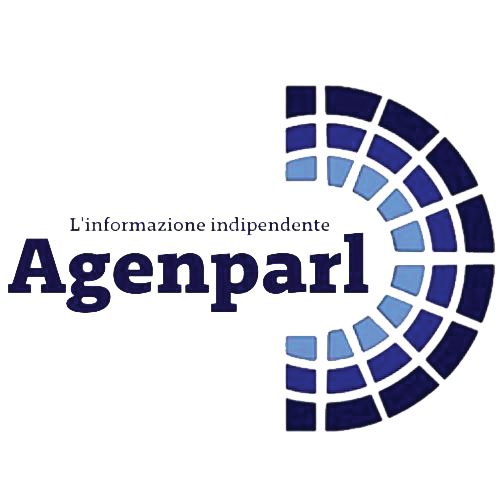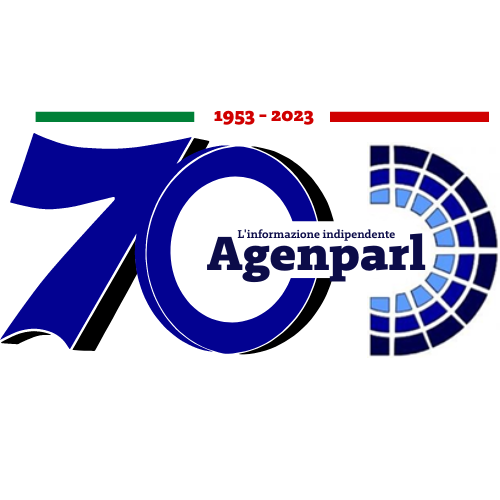 (AGENPARL) - Roma, 20 Ottobre 2025
(AGENPARL) - Roma, 20 Ottobre 2025(AGENPARL) – Mon 20 October 2025 https://whitney.us13.list-manage.com/track/click?u=387f59a72ae7b64ccae37d5c9&id=9a25aec30d&e=59415c6e7e
https://whitney.us13.list-manage.com/track/click?u=387f59a72ae7b64ccae37d5c9&id=85b0d14e43&e=59415c6e7e
** NOW OPEN! HIGH WIRE: CALDER’S CIRCUS AT 100 AT THE WHITNEY MUSEUM
————————————————————
Opening to the public on October 18, High Wire: Calder’s Circus at 100 (https://whitney.us13.list-manage.com/track/click?u=387f59a72ae7b64ccae37d5c9&id=986c118702&e=59415c6e7e) celebrates the centennial of one of Alexander Calder (https://whitney.us13.list-manage.com/track/click?u=387f59a72ae7b64ccae37d5c9&id=8a926cb627&e=59415c6e7e) ’s most iconic works and one of the most beloved works in the Whitney’s collection, Calder’s Circus (https://whitney.us13.list-manage.com/track/click?u=387f59a72ae7b64ccae37d5c9&id=8595d21e16&e=59415c6e7e) (1926–31). In 1926, Calder began constructing his miniature multi-act spectacle while living in Paris, using commonplace materials—wire, fabric, cork, wood, string, and found objects—to create a cast of acrobats, animals, and other circus performers including clowns, a sword swallower, and a ringmaster. The figures were brought to life through performances that Calder staged for audiences of artists and friends, among them Marcel Duchamp (https://whitney.us13.list-manage.com/track/click?u=387f59a72ae7b64ccae37d5c9&id=0aa86855ac&e=59415c6e7e), Joan Miró, Piet Mondrian, and Isamu Noguchi (https://whitney.us13.list-manage.com/track/click?u=387f59a72ae7b64ccae37d5c9&id=25be0a52da&e=59415c6e7e) . These dynamic performances were set to music, complete with lighting and narration by Calder,
and could last up to two hours—representing a radical new form of performance art. Calder stored the Circus in a set of five suitcases and would continue to present the work on both sides of the Atlantic.
A touchstone for Calder’s artistic development, Calder’s Circus reveals his early fascination with movement, balance, suspense, and ephemerality—concepts that would shape his pioneering invention of the mobile and define his sculptural practice in the decades that followed. This exhibition situates the Circus within Calder’s experimental engagement with this popular form, drawing connections between its energetic interplay and his later abstract works.
High Wire: Calder’s Circus at 100 is organized by Jennie Goldstein, Marion Boulton “Kippy” Stroud Curator of the Collection, and Roxanne Smith, Jennifer Rubio Assistant Curator of the Collection.
For more information, visit our digital press kit (https://whitney.us13.list-manage.com/track/click?u=387f59a72ae7b64ccae37d5c9&id=f157fdfad1&e=59415c6e7e) .
The digital press kit includes:
* Artwork Images and Captions
* Exhibition Checklist
* Intro text
* Wall Labels
* Press Releases
* And More Coming Soon!
We hope to see you at the Whitney soon!
** PRESS CONTACT
————————————————————
For press materials and image requests, please visit our press site at whitney.org/press or contact:
Meghan Ferrucci, Senior Publicist
Whitney Museum of American Art
(212) 671-8346
Whitney Press Office
whitney.org/press
(212) 570-3633
** EXHIBITION SUPPORT
————————————————————
High Wire: Calder’s Circus at 100 is sponsored by
Major support is provided by Kenneth C. Griffin and Griffin Catalyst, the Jon and Mary Shirley Foundation, Stephanie March and Dan Benton, and Anne-Cecilie Engell Speyer.
Significant support is provided by Paul Arnhold and Wes Gordon, Jill and Darius Bikoff, Nancy and Fred Poses, and a gift in honor of June and Paul Schorr.
Generous support is provided by Laurie M. Tisch Illumination Fund.
Additional support is provided by The Lipman Family Foundation and an anonymous donor.
** ABOUT THE WHITNEY
————————————————————
The Whitney Museum of American Art, founded in 1930 by the artist and philanthropist Gertrude Vanderbilt Whitney (1875–1942), houses the foremost collection of American art from the twentieth and twenty-first centuries. Mrs. Whitney, an early and ardent supporter of modern American art, nurtured groundbreaking artists when audiences were still largely preoccupied with the Old Masters. From her vision arose the Whitney Museum of American Art, which has been championing the most innovative art of the United States for ninety years. The core of the Whitney’s mission is to collect, preserve, interpret, and exhibit American art of our time and serve a wide variety of audiences in celebration of the complexity and diversity of art and culture in the United States. Through this mission and a steadfast commitment to artists, the Whitney has long been a powerful force in support of modern and contemporary art and continues to help define what is innovative and influential in American art today.
Whitney Museum Land Acknowledgment
The Whitney is located in Lenapehoking, the ancestral homeland of the Lenape. The name Manhattan comes from their word Mannahatta, meaning “island of many hills.” The Museum’s current site is close to land that was a Lenape fishing and planting site called Sapponckanikan (“tobacco field”). The Whitney acknowledges the displacement of this region’s original inhabitants and the Lenape diaspora that exists today.
As a museum of American art in a city with vital and diverse communities of Indigenous people, the Whitney recognizes the historical exclusion of Indigenous artists from its collection and program. The Museum is committed to addressing these erasures and honoring the perspectives of Indigenous artists and communities as we work for a more equitable future. To read more about the Museum’s Land Acknowledgment, visit the Museum’s website (https://whitney.us13.list-manage.com/track/click?u=387f59a72ae7b64ccae37d5c9&id=63f4e467fe&e=59415c6e7e) .
** VISITOR INFORMATION
————————————————————
The Whitney Museum of American Art is located at 99 Gansevoort Street between Washington and West Streets, New York City. Public hours are Monday, Wednesday, and Thursday, 10:30 am–6 pm; Friday, 10:30 am–10 pm; and Saturday and Sunday, 10:30 am–6 pm. Closed Tuesday. Visitors twenty-five years and under and Whitney members: FREE. The Museum offers FREE admission and special programming for visitors of all ages every Friday evening from 5–10 pm and on the second Sunday of every month.
============================================================
Whitney Museum of American Art
99 Gansevoort Street New York, NY 10014
** whitney.org (https://whitney.us13.list-manage.com/track/click?u=387f59a72ae7b64ccae37d5c9&id=a3e9ba70cd&e=59415c6e7e)
** (https://whitney.us13.list-manage.com/track/click?u=387f59a72ae7b64ccae37d5c9&id=9837e2e00b&e=59415c6e7e)
** (https://whitney.us13.list-manage.com/track/click?u=387f59a72ae7b64ccae37d5c9&id=fdd55efeb2&e=59415c6e7e)
** (https://whitney.us13.list-manage.com/track/click?u=387f59a72ae7b64ccae37d5c9&id=c2f272c656&e=59415c6e7e)
** (https://whitney.us13.list-manage.com/track/click?u=387f59a72ae7b64ccae37d5c9&id=225d53018f&e=59415c6e7e)
** (https://whitney.us13.list-manage.com/track/click?u=387f59a72ae7b64ccae37d5c9&id=607f180e5f&e=59415c6e7e)
** (https://whitney.us13.list-manage.com/track/click?u=387f59a72ae7b64ccae37d5c9&id=0c4682d502&e=59415c6e7e)
** (https://whitney.us13.list-manage.com/track/click?u=387f59a72ae7b64ccae37d5c9&id=fef37f925a&e=59415c6e7e)
Discover the Whitney’s audio guides and accessible content on ** Bloomberg Connects (https://whitney.us13.list-manage.com/track/click?u=387f59a72ae7b64ccae37d5c9&id=4b10bef36c&e=59415c6e7e)
** Update your preferences (https://wmaa-email-preferences.mailchimpsites.com/manage/preferences?u=387f59a72ae7b64ccae37d5c9&id=2d1244a32b&e=59415c6e7e&c=32a8110f2a)
to change the types of emails you receive from the Whitney.
** Forward (https://us13.forward-to-friend.com/forward?u=387f59a72ae7b64ccae37d5c9&id=32a8110f2a&e=59415c6e7e)
this email to a friend.
** Unsubscribe (https://whitney.us13.list-manage.com/unsubscribe?u=387f59a72ae7b64ccae37d5c9&id=2d1244a32b&t=b&e=59415c6e7e&c=32a8110f2a)
from all Whitney emails.
Image credit:
Alexander Calder, Lion Tamer, Lion and Cage (detail) from Calder’s Circus, 1926-31. Wire, yarn, cloth, buttons, painted metal, wood, metal, leather and string, dimensions variable. Whitney Museum of American Art, New York; purchase with funds from a public fundraising campaign in May 1982. One half of the funds were contributed by the Robert Wood Johnson Jr. Charitable Trust. Additional major donations were given by The Lauder Foundation; the Robert Lehman Foundation, Inc.; the Howard and Jean Lipman Foundation, Inc.; an anonymous donor; The T.M. Evans Foundation, Inc.; MacAndrews & Forbes Group, Incorporated; the De Witt Wallace Fund, Incorporated; Martin and Agneta Gruss; Anne Phillips; Mr. and Mrs. Laurance S. Rockefeller; the Simon Foundation, Inc.; Marylou Whitney; Bankers Trust Company; Mr. and Mrs. Kenneth N. Dayton; Joel and Anne Ehrenkranz; Irvin and Kenneth Feld; Flora Whitney Miller. More than 500 individuals from 26 states and abroad also contributed to the campaign
